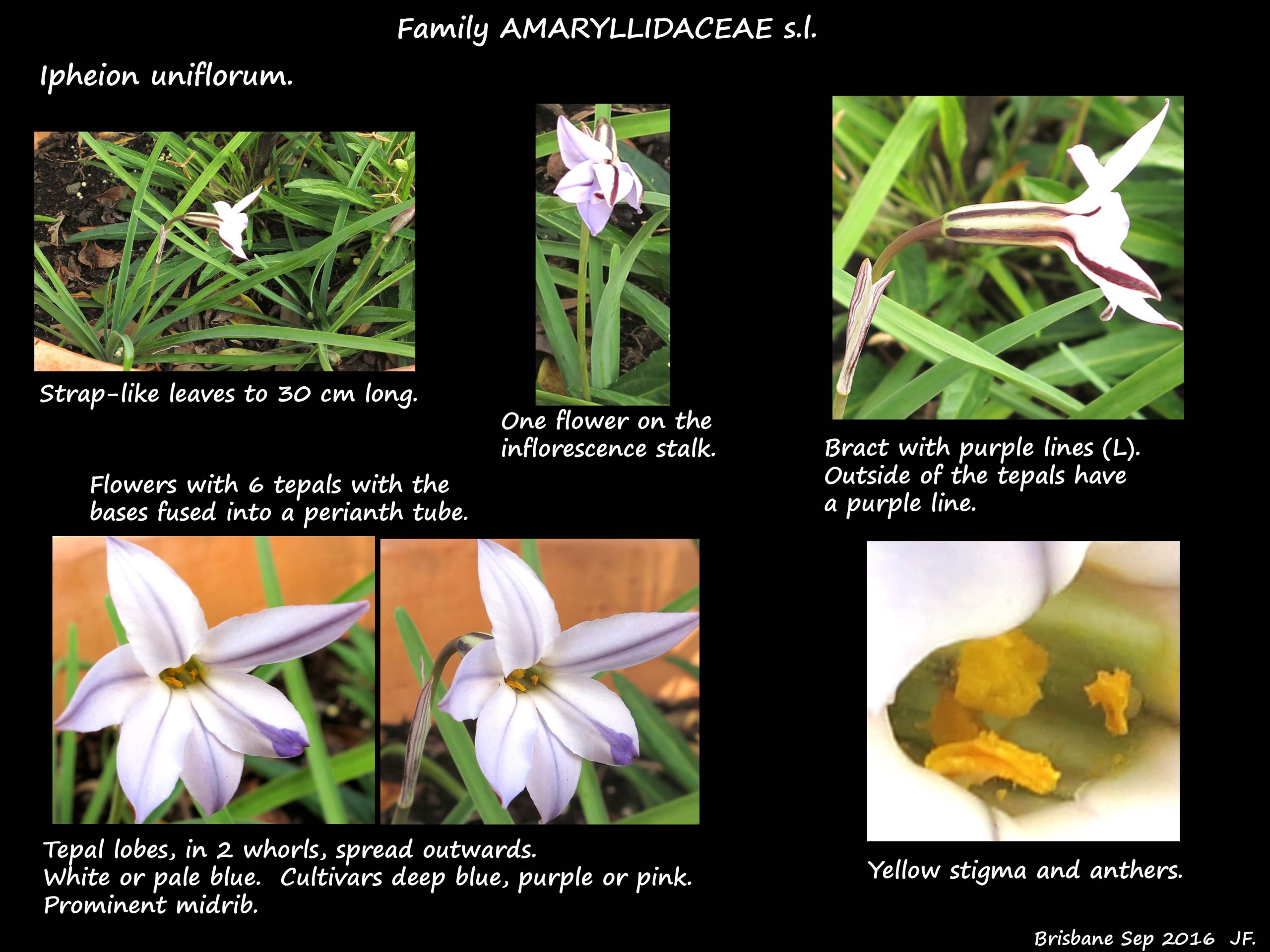Ipheion uniflorum.
Family Amaryllidaceae > Subfamily Allioideae > Tribe Gilliesieae.
The genus, now with 3 species ( Ipheion sessile, I. tweedieanum and I. uniflorum) has been
seen under numerous other names including Tristagma.
Ipheion uniflorum is commonly known as the Spring Starflower.
It is seen in cultivation in Australia.
Perennial plants growing from small bulbs about 2 cm long.
Bulbs have thin roots and stolons (long, horizontal stems) on which new bulbs form.
About 4 – 6 flat, grey-green grass-like leaves that are up to 30 cm long.
Leaves appear before the flowers.
Bulbs and leaves have an oniony smell when damaged.
Each bulb can have numerous inflorescences over a 6 to 8 week period.
The leafless stalks (scapes) are up to 20 cm high and have one flower.
The bract has purplish stripes.
The star-shaped flowers are about 3 cm long.
The 6 tepals, in 2 whorls, have the bases fused into a purplish tube.
The tepal lobes flare outwards so the flower is 3 to 4 cm across.
Mostly white or pale blue but cultivars include deeper blue, pink and purple.
Tepal lobes have a blue or purplish line (midrib) most prominent on the backs of the lobes.
The stamens, with yellow anthers reach the top of the perianth tube.
J.F.


